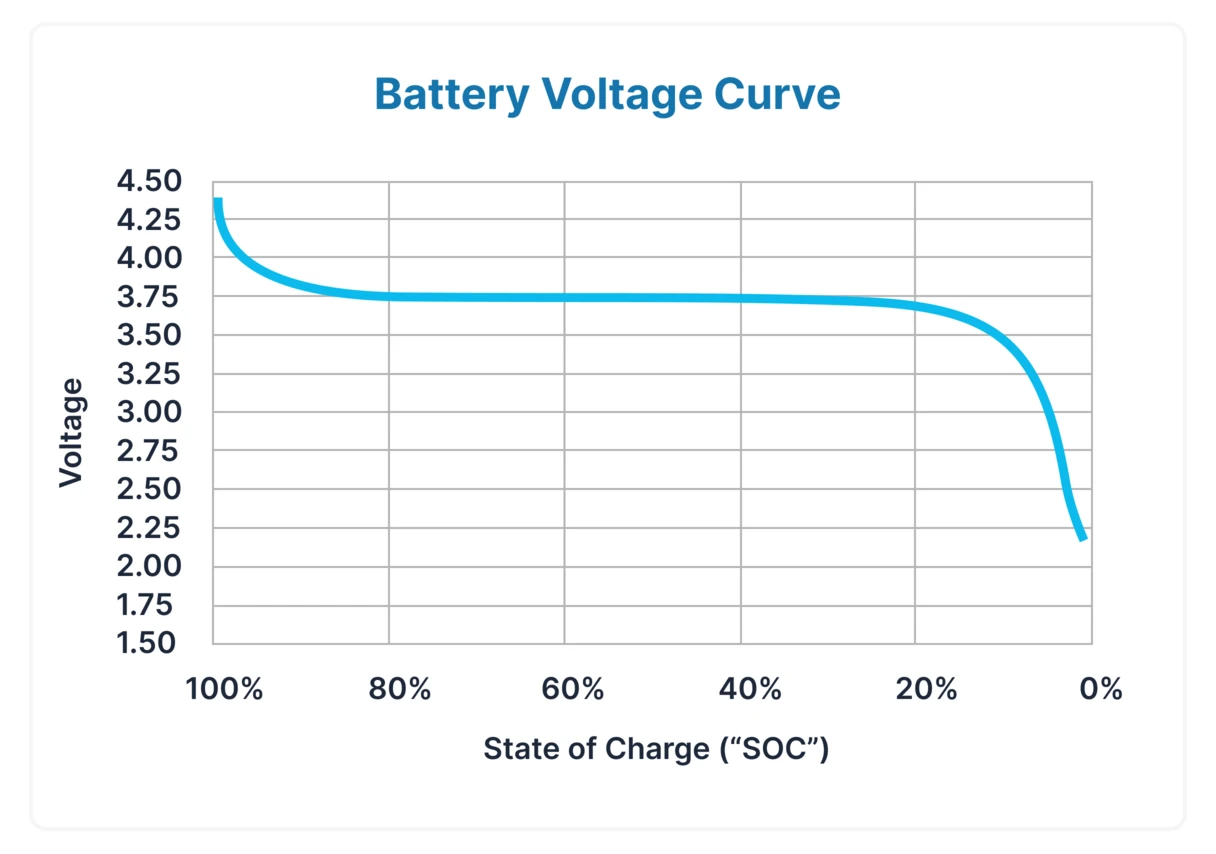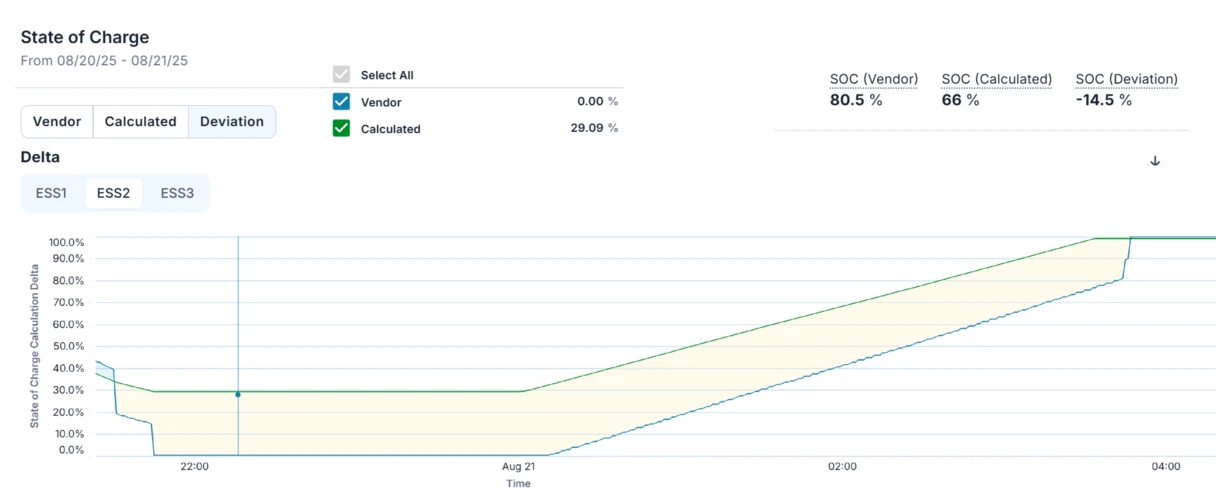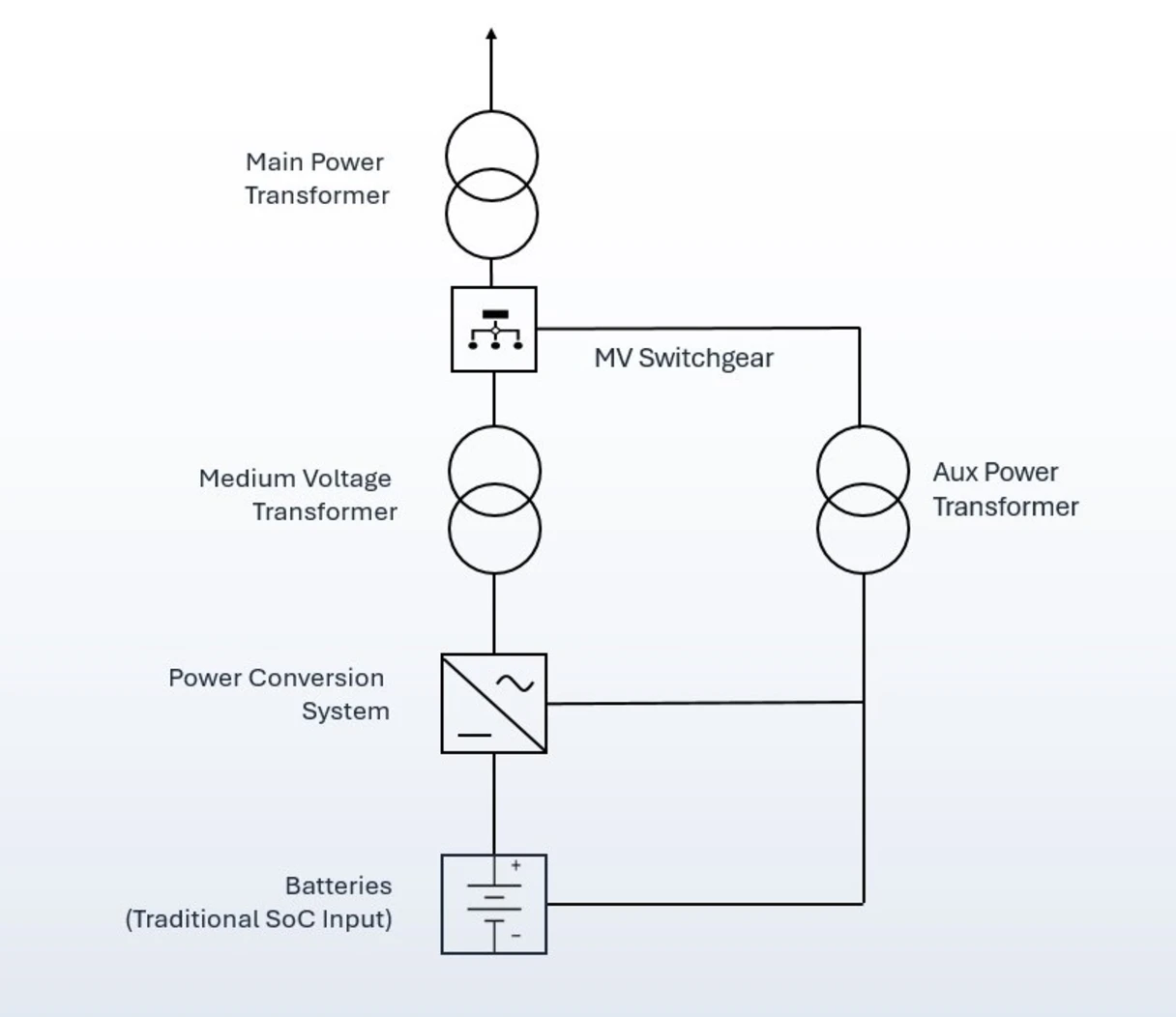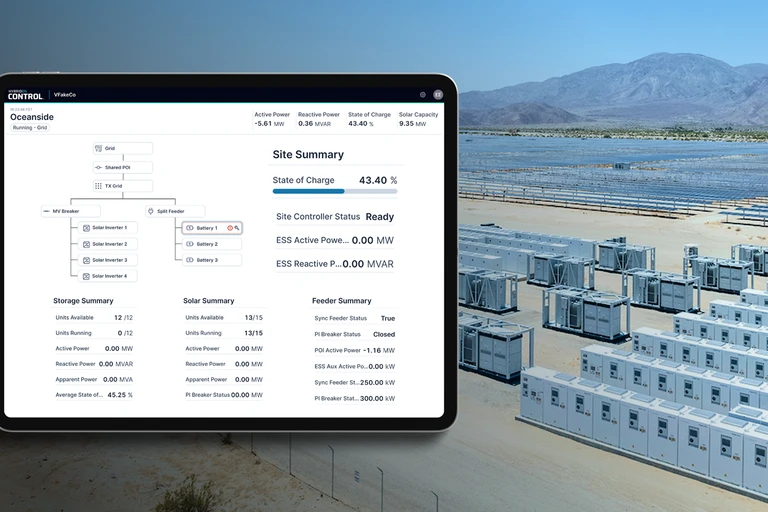Similar to a cell phone’s battery level percentage, the state of charge (SoC) calculation for utility scale battery storage assets tells operators and owners how much charge is available in their assets. If the SoC reading is inaccurate, it could potentially lead to overcommitting energy resources to grid operators, as well as pushing the system too close to its limits and causing faults.
In energy storage, knowing your true state of charge (SoC) isn't just important—it's the difference between profitable operations and leaving money on the table. Traditional SoC measurement approaches face unique challenges that can cost operators hundreds of thousands in lost revenue annually.
FlexGen's hybrid SoC calculation combines advanced multi-point system validation with sophisticated battery analytics to deliver significantly improved accuracy for battery energy storage systems, eliminating the costly blind spots that plague conventional measurement approaches.
The SoC Challenge: Why Traditional Methods Fall Short
Traditional SoC calculations rely on a combination of two approaches, each with fundamental shortcomings:
- Coulombe counting: Adds up the charge flow over time and uses the total to infer SoC.
- Open Circuit Voltage (OCV) Lookup: The OCV curve for a battery defines a theoretical mapping between its voltage and SoC. So, given the latest voltage reading, the BMS can directly "look-up" the corresponding SoC value in the OCV curve.
The Flat Voltage Problem: Many batteries exhibit a flat open circuit voltage (OCV) curve over a wide range of charge, making voltage-based SoC estimation unreliable in the operational range where most cycling occurs.
Battery voltage curve over SoC range for lithium battery chemistries
This graph shows how a significant amount of the SoC range maintains a consistent voltage, making it difficult to rely solely on voltage to predict SoC.
Coulomb Counting Drift: Traditional current-based tracking accumulates sensor errors and calibration drift, leading to SoC estimates that can deviate by 10-20% from reality—particularly problematic in systems that lack reliable voltage recalibration points.
The result? Operators face a choice between conservative operations that sacrifice revenue or aggressive strategies that risk outages, penalties and compliance issues.
Delta between the original equipment manufacturer (OEM) SoC and the HybridOS reading
The OEM, or vendor, reading drops from around 40% to 0% SoC in minutes during a discharge and then similarly jumps from around 80% SoC to 100% on a charge while the calculated value continues to show the true SoC of the BESS.
FlexGen's Breakthrough: Hybrid System-Level SoC Intelligence
FlexGen addresses SoC measurement challenges through a unique implementation of system-level validation and advanced battery intelligence:
Multi-Level Energy Flow Validation
Where traditional approaches rely solely on battery-level data, FlexGen integrates precision measurement across the entire energy conversion chain:
- Battery current measurement for energy tracking at the rack level
- Inverter-level DC and AC measurements capturing conversion efficiency at the PCS
- Grid interconnection validation of actual deliverable energy at the metering point
Diagram of energy conversion chain
Traditional SoC calculations that only pull from the batteries, specifically the battery management systems (BMS), often don’t provide accurate readings. FlexGen’s SoC calculation pulls measurements from across the energy conversion chain for more accurate readings, including at the battery, PCS, and the main power transformer.
This creates multiple layers of cross-validation that reduce drift and accumulation errors common in single-source SoC calculations.
Advanced Battery-Optimized Analytics
FlexGen's proprietary algorithms target measurement challenges through:
- Electrochemical Modeling: Rather than only incorporating data from the batteries, FlexGen uses data from all devices in the system to check and validate true energy flows.
- Pattern Recognition: FlexGen utilizes the site-specific historical data to train the SoC model for optimal performance on every site.
- Cross-Fleet Learning: Insights from FlexGen's 100+ operational installations to improve model accuracy across deployments and vendors.
The Strategic Advantage of Accurate SoC
For operators of battery storage systems, FlexGen's hybrid SoC intelligence provides competitive advantages that directly impact performance:
- Maximize Asset Utilization: Operate across the full safe capacity range instead of overly conservative windows, unlocking greater value over time.
- Market Confidence: Bid more aggressively in energy markets with SoC that reflects actual deliverable capacity.
- Regulatory Compliance: Meet contractual obligations with greater certainty, reducing risk of penalties.
- Future-Proof Operations: As energy storage technology evolves, precise SoC measurement will become increasingly critical for state of health (SoH) calculations, determining lifetime value, and augmentation timing.
What This Means for Operators
FlexGen's hybrid SoC calculation shifts energy storage operations from estimation to precision:
- Operational Excellence: Make dispatch decisions based on validated energy data, not uncertain BMS estimates.
- Revenue Optimization: Capture greater earning potential through confident market participation.
- Risk Management: Reduce operational uncertainty while maintaining safety and compliance standards.
- Competitive Positioning: Operate with a level of measurement precision that differentiates your fleet.
The Future of Energy Storage Intelligence
As energy storage continues to scale, accurate SoC measurement becomes essential for success. FlexGen's hybrid approach—combining system-level validation with advanced battery analytics—provides the measurement accuracy and operational confidence operators need to thrive.
Don't let measurement uncertainty limit your asset's potential. FlexGen's field-tested SoC intelligence delivers the accuracy and confidence to maximize your energy storage investment.
Contact FlexGen to learn how our hybrid SoC calculation can unlock the full revenue potential of your energy storage system.





